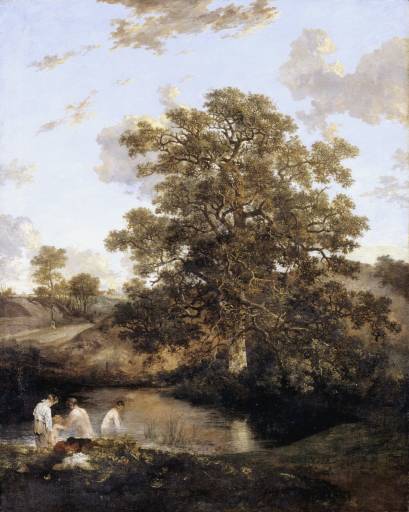In a corner of the sunlit, reedy pool, next to the rutted track, beneath the branches of the ancient oak tree, the painter has included a group of boys bathing. Two of them are his own sons while another is said to be the son of one Mr Aldous, mail-coach driver. The bravest of the boys has waded into the water up to his waist and now gingerly immerses his forearms in preparation for the plunge. His face is ruddy, his flesh as white as English porcelain. The scene seems both real and ideal: a moment in time perpetuated and, in the process, transmuted into an idyll. It is a picture shot through with trace memories of other kinds of picture. Viewed through half-closed eyes, the boys at play could be Diana and her nymphs bathing, about to be spied by Actaeon; or they could be early Christians being baptised out of doors.
John Crome, who painted The Poringland Oak near the end of his life, in 1818, was known as “the Norfolk Hobbema”: on his deathbed he is said to have gasped “Oh Hobbema, my dear Hobbema, how I have loved you”. But for all his attachment to the robust traditions of Dutch Old Master landscape painting he was distinctly his own man. Born in a public house in


